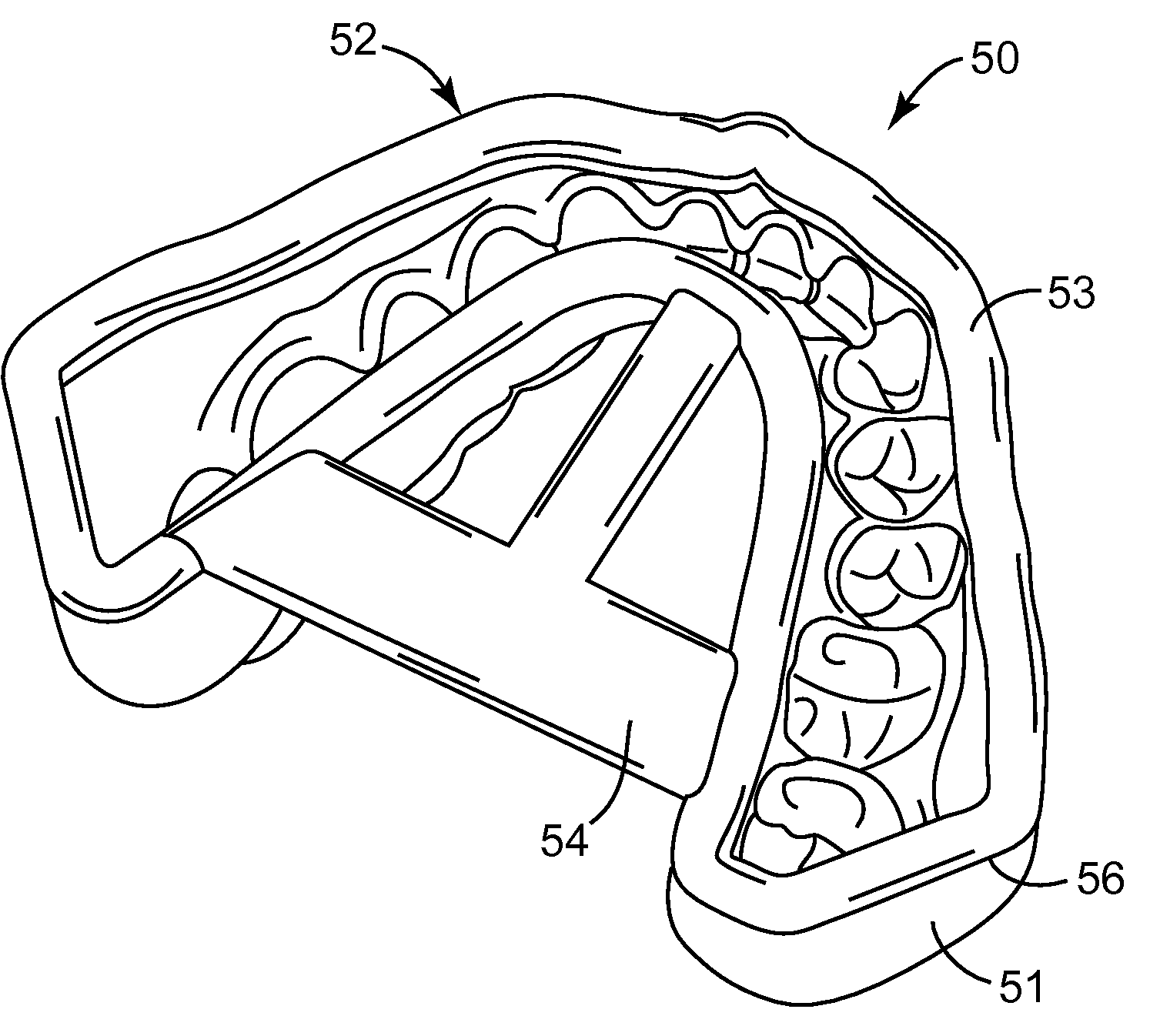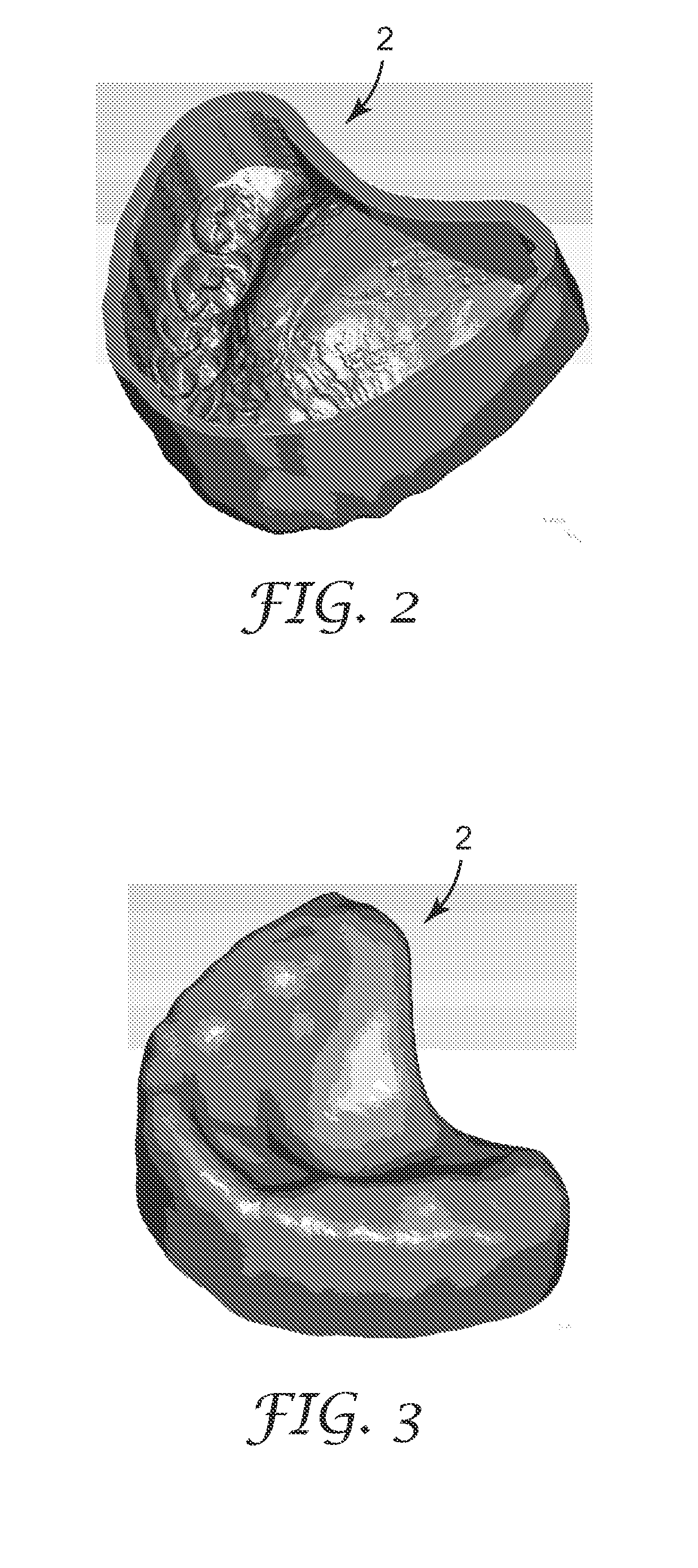Digitally forming a dental model for fabricating orthodontic laboratory appliances
a laboratory appliance and digital technology, applied in dental surgery, instruments, medical science, etc., can solve the problems of inconvenience for patients, delay in transporting the physical dental model to the laboratory, and shipping costs
- Summary
- Abstract
- Description
- Claims
- Application Information
AI Technical Summary
Benefits of technology
Problems solved by technology
Method used
Image
Examples
example 1
[0058]Raw digital data, representing a patient's lower dental arch with surrounding soft tissue, was obtained from an intraoral scan provided by Brontes Technologies, Inc. (Lexington, Mass.). The digital data set was then cleansed and surfaced using Raindrop Geomagic software to produce a clear 3D surface image of the dental structure. This surface was then offset to define a negative shell with an interior contour exactly matching the original dental structure. The negative shell, as represented by the digital data, was then printed using a VIPER brand SLA system from 3D Systems using ACCURA brand Si-40 photopolymer SLA material, also from 3D Systems. The printed negative shell was then used as a mold to cast a positive dental model using white orthodontic stone provided by Whip-Mix Corporation (Louisville, Ky.). Once cast, the stone model was allowed to set at room temperature for 1 hour. After the stone model was fully hardened, the negative mold and stone dental model were place...
example 2
[0059]The original digital data set from Example 1 was then used to print a second negative shell, this time using a low modulus resin. To form the low modulus shell, the digital data set was again refined and offset to produce a virtual digital shell structure. A physical shell based on the virtual shell was then printed using an EDEN 500V 3D printing machine from Objet Geometries, used with Fullcure 930 Series “TangoBlack” resin, also provided by Objet Geometries. To provide added strength, the shell thickness for this prototype was defined to be approximately 3 millimeters. Once again, the printed shell was used as a negative mold to cast a positive dental model using orthodontic stone as described in Example 1. After the model had set, the negative mold was flexibly removed from the cast stone dental model at room temperature with no apparent damage to the cast model. This example demonstrates that a rapid prototyping process can directly fabricate a negative mold that is suffic...
example 3
[0060]As in Example 1, a digital data set representing a dental structure was cleansed and surfaced. Instead of using the surface to define a negative mold object, however, the data set was used to define a virtual positive mold object or a replica of the dental structure. This data set was then used to print a positive mold using the VIPER brand SLA system and ACCURA brand Si-40 photopolymer SLA material mentioned above. After verifying the positive mold was accurate, a negative mold was formed over the positive mold using Z-DUPE brand duplication silicone provided by Henry-Schein Inc. (Melville, N.Y.) in conjunction with a cylindrical molding vessel, fully submerging the positive mold in the Z-DUPE material, and allowing the silicone to set for 2 hours. After the silicone negative mold was hardened, it was detached from the positive mold and subsequently used to cast the physical dental model out of orthodontic stone as carried out in Examples 1 and 2. The Z-DUPE matrix material w...
PUM
 Login to View More
Login to View More Abstract
Description
Claims
Application Information
 Login to View More
Login to View More - R&D
- Intellectual Property
- Life Sciences
- Materials
- Tech Scout
- Unparalleled Data Quality
- Higher Quality Content
- 60% Fewer Hallucinations
Browse by: Latest US Patents, China's latest patents, Technical Efficacy Thesaurus, Application Domain, Technology Topic, Popular Technical Reports.
© 2025 PatSnap. All rights reserved.Legal|Privacy policy|Modern Slavery Act Transparency Statement|Sitemap|About US| Contact US: help@patsnap.com



